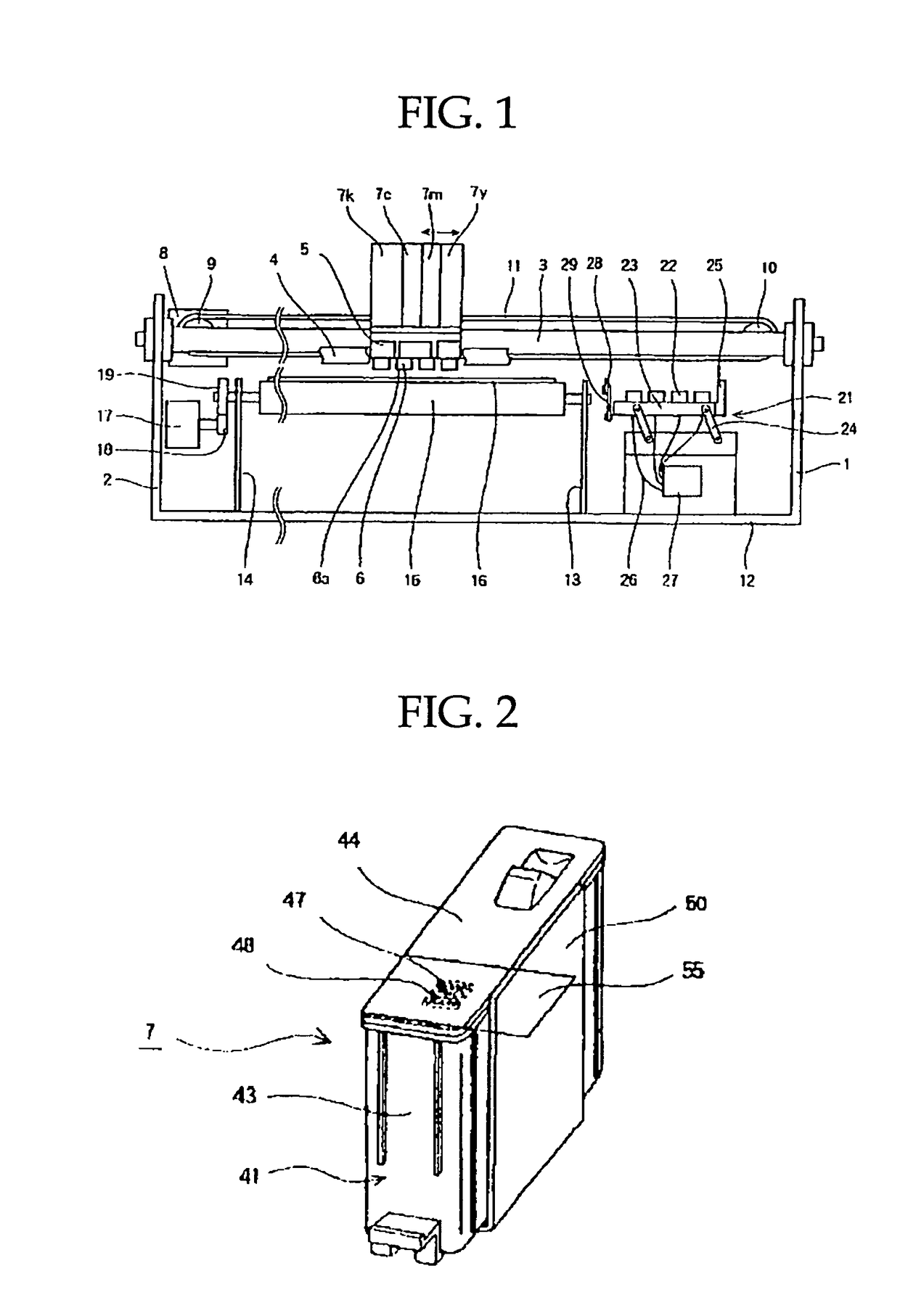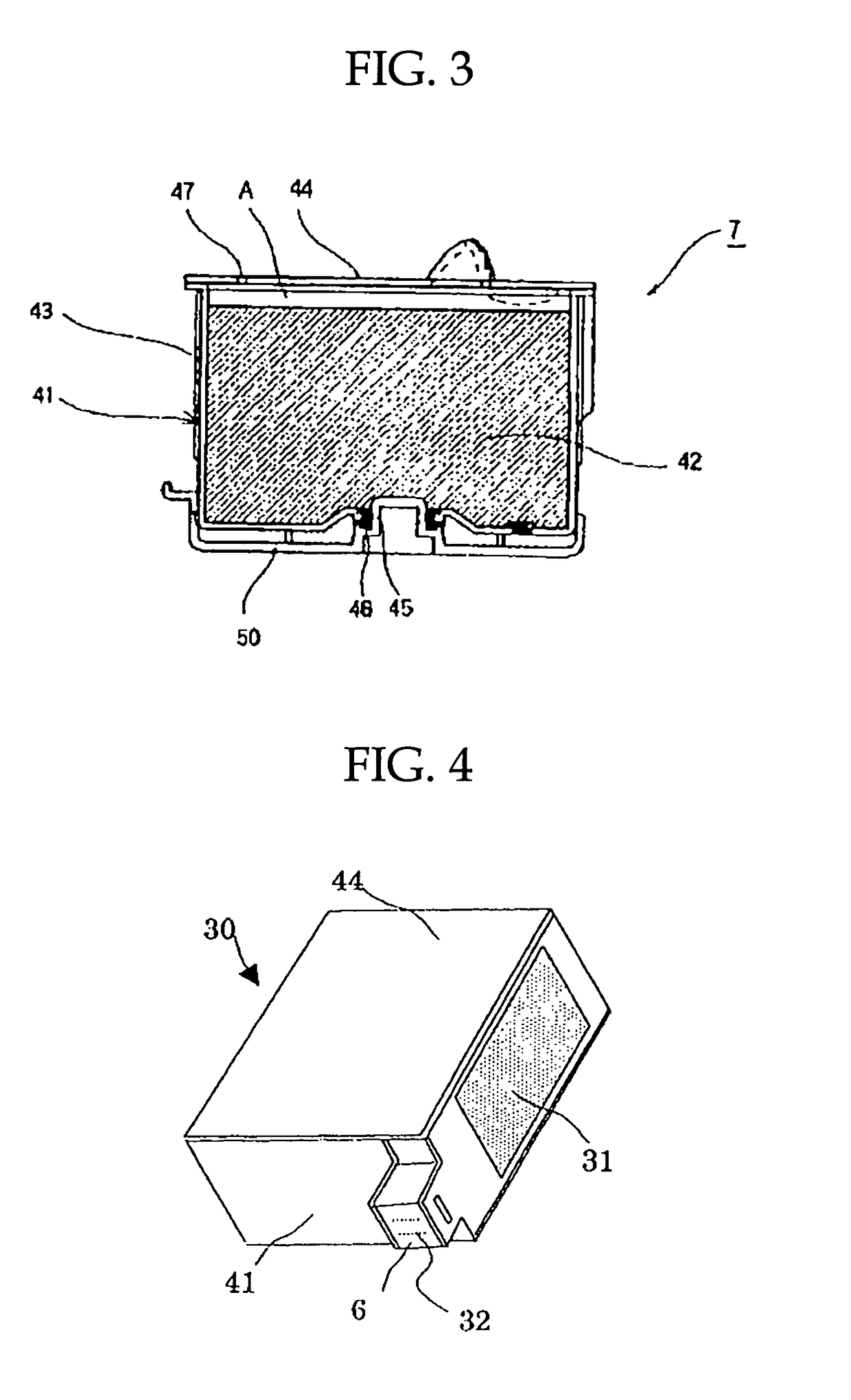Ink jet recording method, recording device, ink/recording medium set, recording matter
a recording method and inkjet technology, applied in the direction of inks, instruments, thermography, etc., can solve the problems of reducing the recording density, printing speed, and printing speed that cannot meet the requirements of color reproducibility, etc., to achieve good color tone, high image density, and discharge stability and storage stability. good
- Summary
- Abstract
- Description
- Claims
- Application Information
AI Technical Summary
Benefits of technology
Problems solved by technology
Method used
Image
Examples
reference example 1
Preparation of Polymer Fine Particle Dispersion Containing Phthalocyanine Pigment
[0199]A blue polymer fine particle dispersion was prepared according to the procedure of Preparation Example 3 described in JP-A No. 2001-139849.
[0200]Specific procedures are shown below.
(1) Preparation of Polymer Solution
[0201]The inside atmosphere of a 1-liter flask equipped with a mechanical stirrer, thermometer, nitrogen gas feed tube, condenser and dropping funnel was thoroughly replaced with nitrogen gas, and 11.2 g of styrene, 2.8 g of acrylic acid, 12.0 g of lauryl methacrylate, 4.0 g of polyethylene glycol methacrylate, 4.0 g of a styrene macromer AS-6 (trade name, a product of Toagosei Co., Ltd.) and 0.4 g of mercaptoethanol were placed therein, and the mixture was raised in temperature to 65° C.
[0202]Next, a mixture of 100.8 g of styrene, 25.2 g of acrylic acid, 108.0 g of lauryl methacrylate, 36.0 g of polyethylene glycol methacrylate, 60.0 g of hydroxyethyl methacrylate, 36.0 g of a styrene...
reference example 2
Preparation of Polymer Fine Particle Dispersion Containing Dimethylquinacridone Pigment
[0207]A purplish red (magenta) dispersion of polymer fine particles was prepared by the procedure of Reference Example 1, except for using Pigment Red 122 instead of the phthalocyanine pigment. The polymer fine particles had an average particle diameter (D50%) of 127 nm as detemrined with a Microtrac UPA.
reference example 3
Preparation of Polymer Fine Particle Dispersion Containing Monoazo Yellow Pigment
[0208]A yellow dispersion of polymer fine particles was prepared by the procedure of Reference Example 1, except for using Pigment Yellow 74 instead of the phthalocyanine pigment. The polymer fine particles had an average particle diameter (D50%) of 76 nm as detemrined with a Microtrac UPA.
PUM
| Property | Measurement | Unit |
|---|---|---|
| BET specific surface area | aaaaa | aaaaa |
| surface tension | aaaaa | aaaaa |
| viscosity | aaaaa | aaaaa |
Abstract
Description
Claims
Application Information
 Login to View More
Login to View More - R&D
- Intellectual Property
- Life Sciences
- Materials
- Tech Scout
- Unparalleled Data Quality
- Higher Quality Content
- 60% Fewer Hallucinations
Browse by: Latest US Patents, China's latest patents, Technical Efficacy Thesaurus, Application Domain, Technology Topic, Popular Technical Reports.
© 2025 PatSnap. All rights reserved.Legal|Privacy policy|Modern Slavery Act Transparency Statement|Sitemap|About US| Contact US: help@patsnap.com



